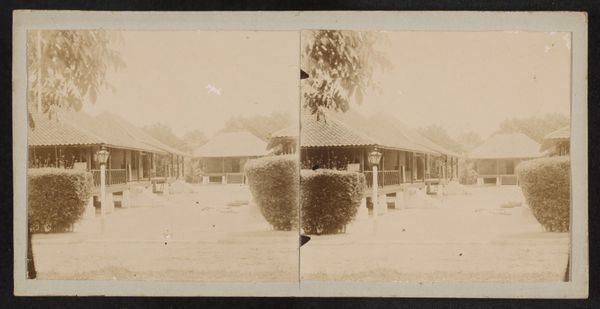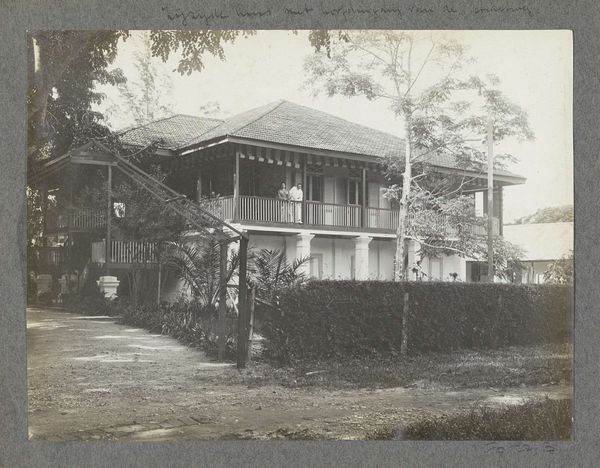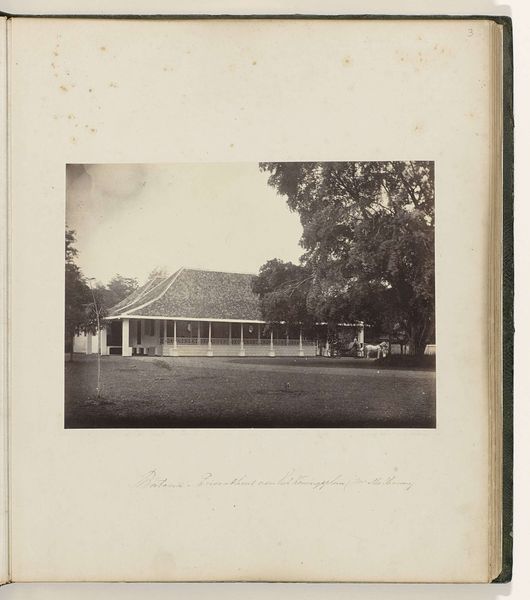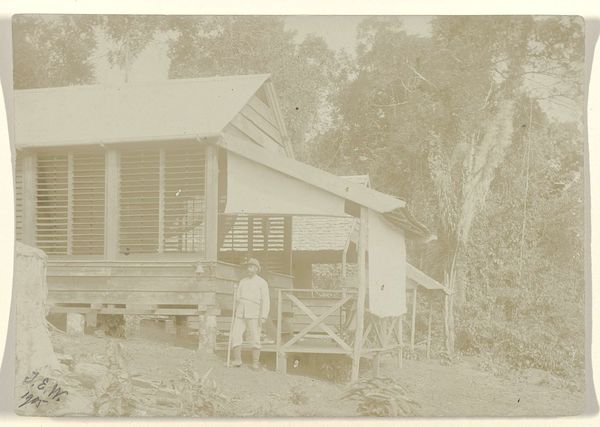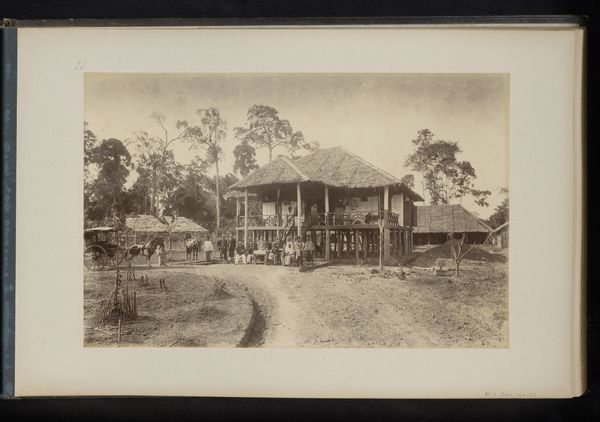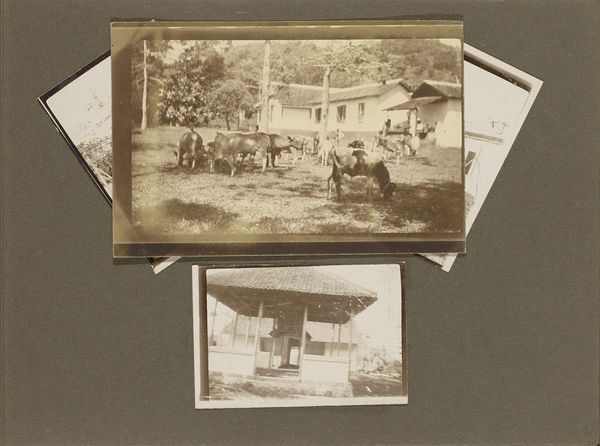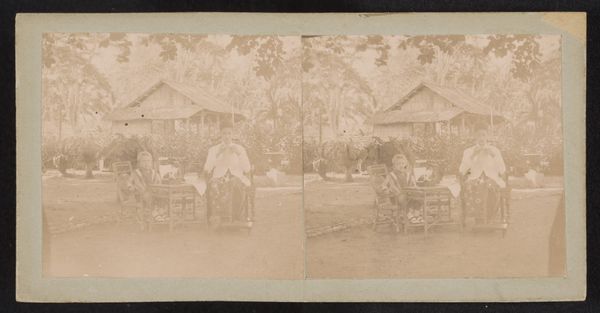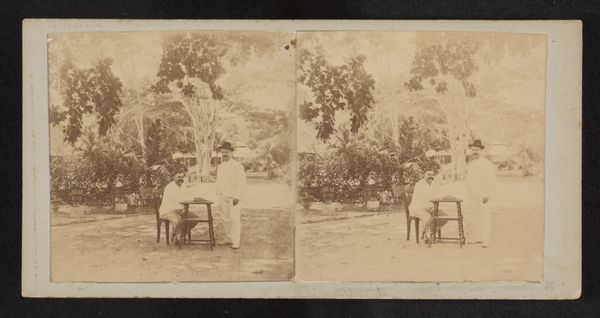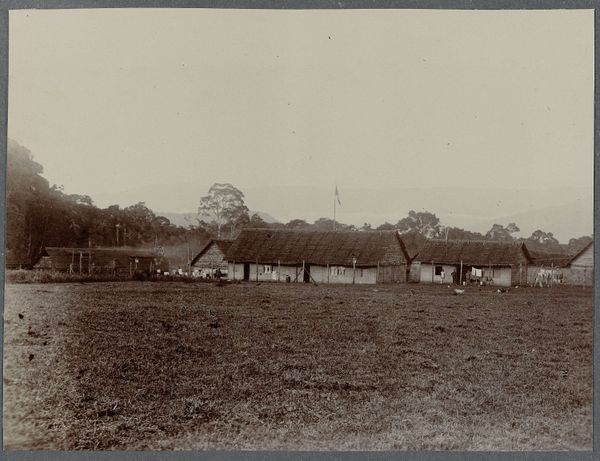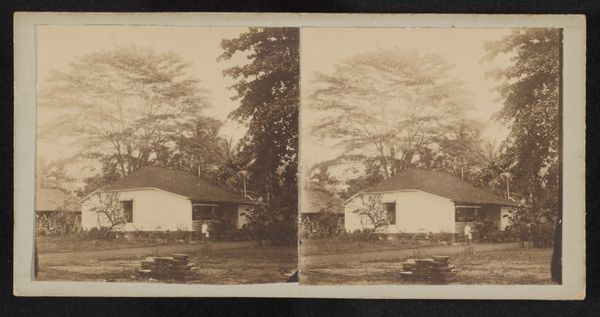
photography, albumen-print
#
landscape
#
photography
#
genre-painting
#
albumen-print
#
realism
Dimensions: height 80 mm, width 80 mm, height 88 mm, width 178 mm
Copyright: Rijks Museum: Open Domain
Curator: Let's delve into this albumen print from between 1900 and 1922, titled "Oude kantoor te Merawang" by Robert Julius Boers, housed right here at the Rijksmuseum. It presents a rather straightforward scene of what appears to be an old office in Merawang. Editor: My immediate impression is one of subdued documentation. The tones are muted, almost melancholic. There's a certain stillness that suggests abandonment, or at least a moment captured outside of its usual activity. Curator: Indeed. Considering albumen prints, the process itself, involving coating paper with egg white, sensitized with silver nitrate, speaks volumes. It indicates a deliberate act of image-making within specific colonial social frameworks. This was not point-and-shoot photography. The material tells of meticulousness and labor. Editor: Precisely, the very choice to document this "office" raises crucial questions. What kind of administrative work occurred here? Who labored within its walls, and under whose authority? It's important to consider this image as situated within the context of Dutch colonial rule in Indonesia. Curator: Good point, and notice the texture of the landscape: the coarse foliage, the architectural form of the building. I wonder about the construction process: What local materials were employed? Who was involved in its building, and under what type of labor conditions? It could reveal insights into colonial economies. Editor: It reflects the uneven power dynamics inherent in colonial structures. The image becomes not just a landscape, but a visual document reflecting on cultural hegemony, social disparities, and the systematic erasure of indigenous histories. Curator: That reading certainly reframes how we perceive the composition itself, turning it into a powerful statement on the insidious nature of colonial administration. The image is then an interesting source material to challenge traditional perceptions of value and the ways labor and local materials become implicated within colonial projects. Editor: It’s a chilling reminder that even seemingly innocuous depictions of landscape can be imbued with complex political and social histories. I find it compelling to remember the human impact and legacies in such images. Curator: Reflecting upon the photographic labor to produce such a composition and colonial control is insightful. Editor: Absolutely. There is more than initially meets the eye; as we reflect on historical contexts, and social stratifications of this seemingly commonplace image.
Comments
No comments
Be the first to comment and join the conversation on the ultimate creative platform.
